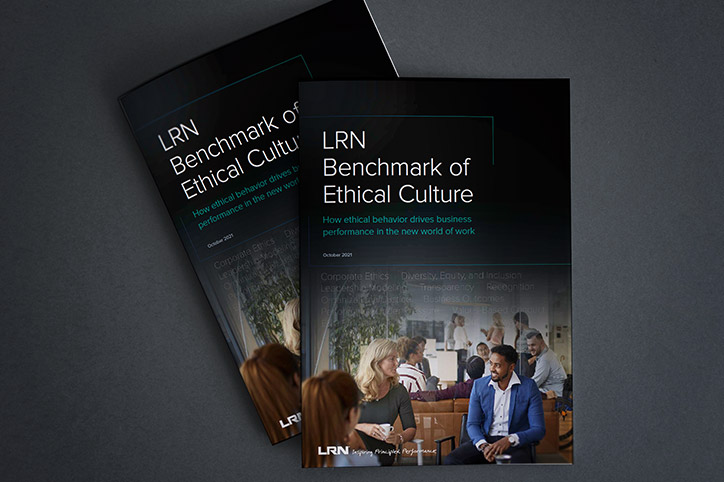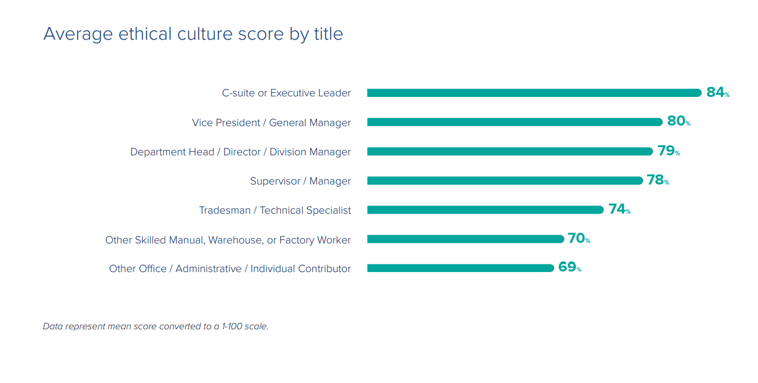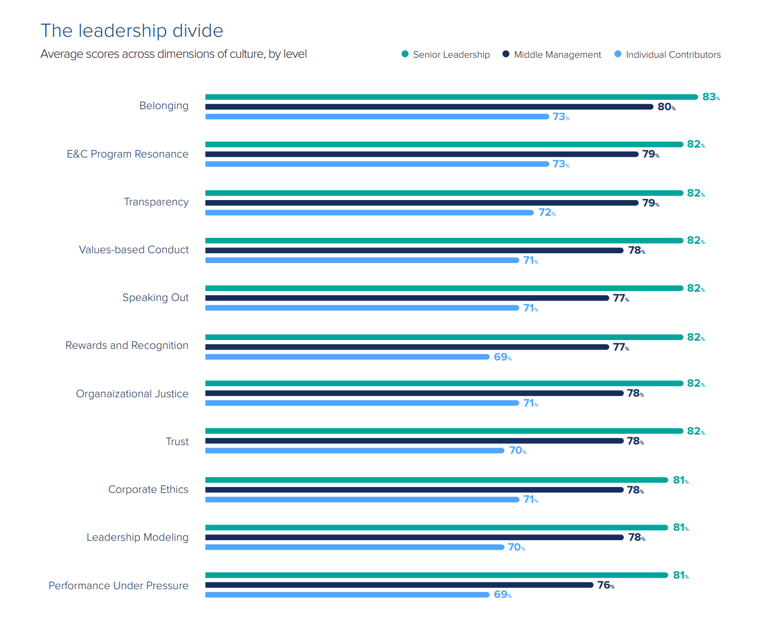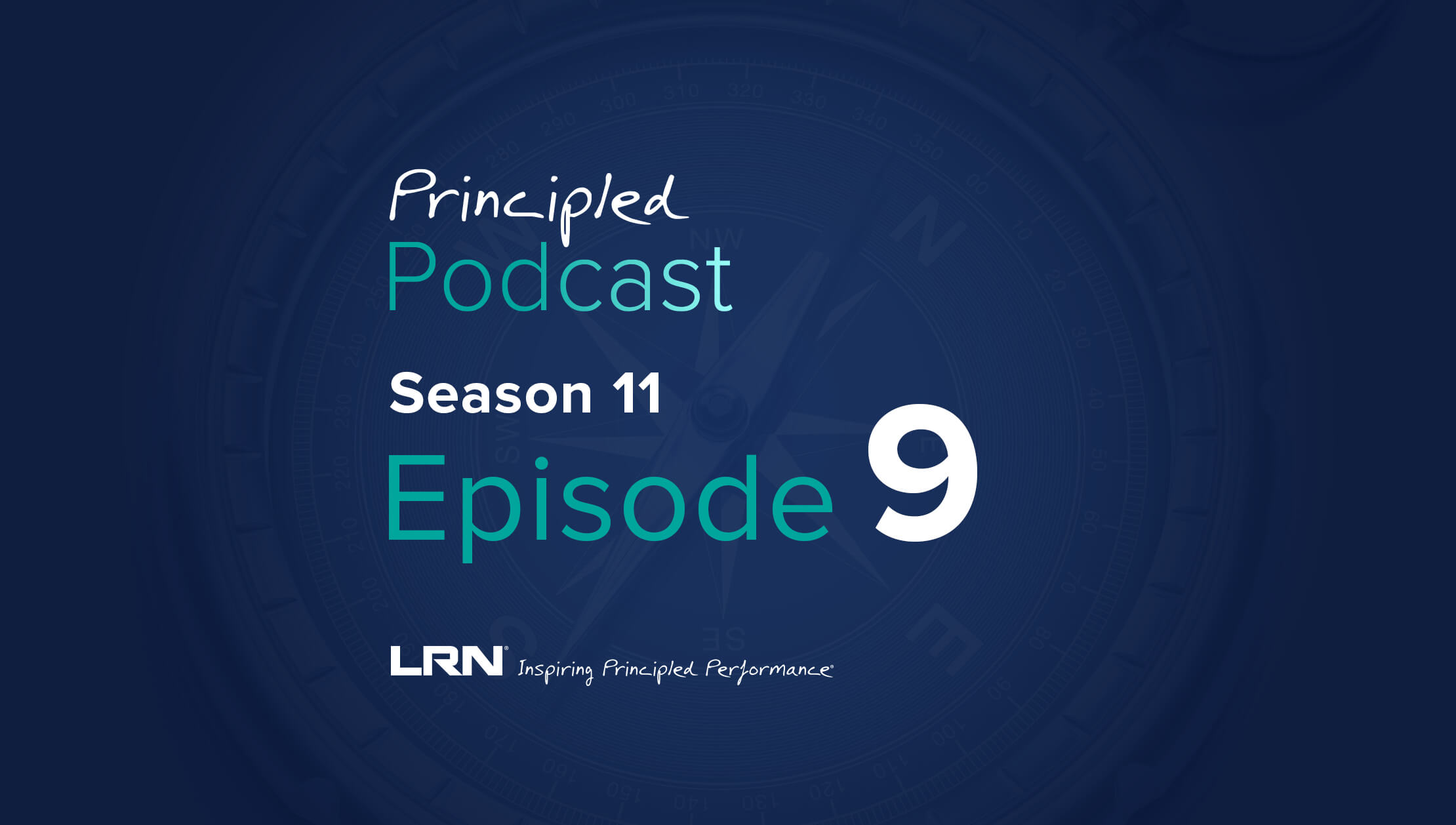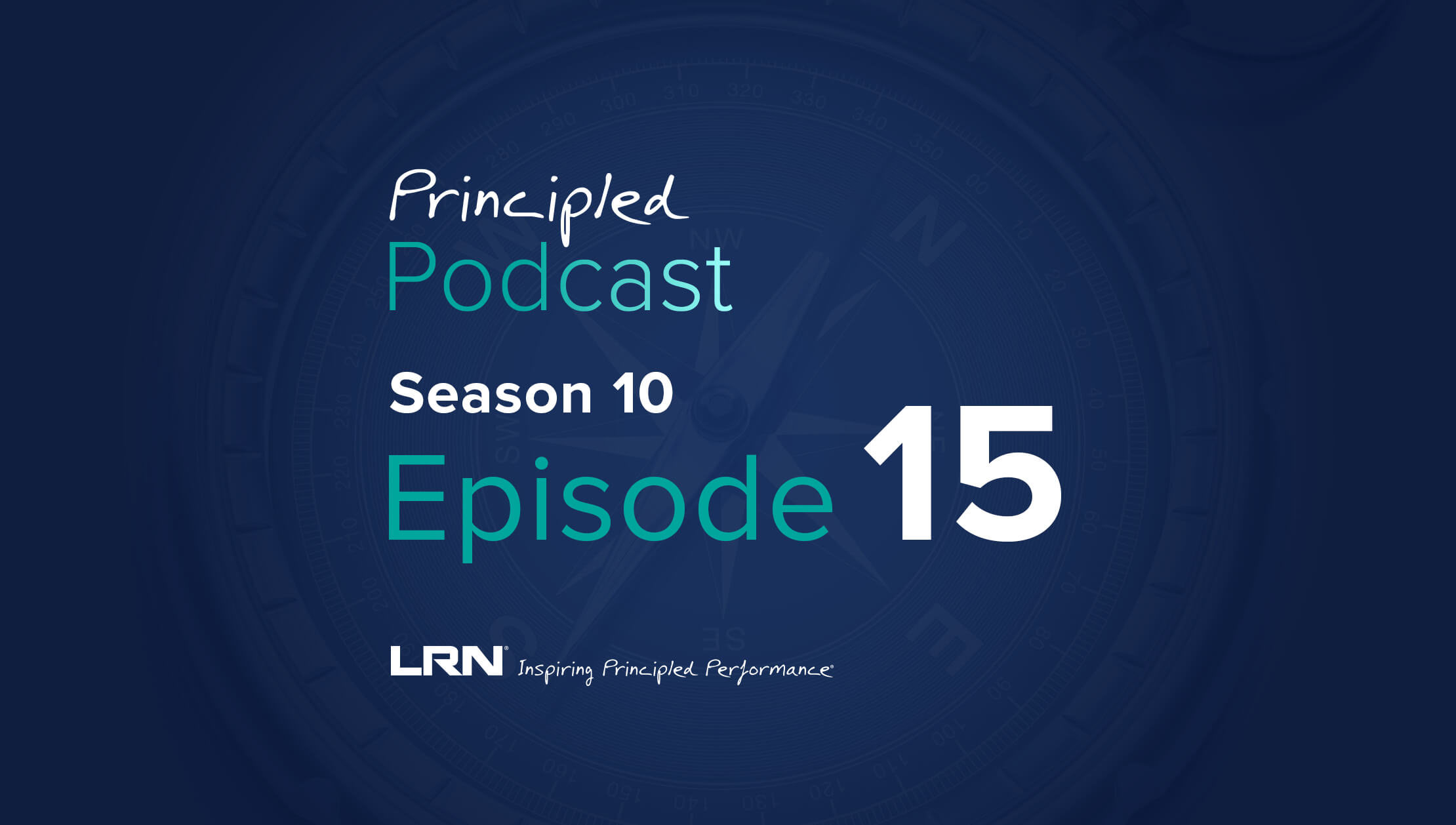Frontline workers were heralded as heroes for keeping their companies, and our economy, running in the early days of the COVID-19 pandemic. Today, that halo has lost its glint with many of these same workers reporting burnout, dissatisfaction, and frustration in their jobs and at work.
One possible disconnect for companies to consider as they fight against what’s been called The Great Resignation is an examination of the felt experience of corporate cultures by employees. The LRN Benchmark of Ethical Culture—a multi-year, collaborative research effort with data drawn from a cross section of nearly 8,000 employees, representing 17 industries and 14 countries—provides some insight relevant across industries, geographies, and company size.
The current Pandemic Paradox in corporate culture
Despite being publicly praised for their contributions, front-line workers report dissatisfaction with corporate culture. What we found through the Benchmark of Ethical Culture report is that people whose job titles are “office, administrative, individual contributor, skilled manual, warehouse, or factory worker” gave their organization the lowest scores across all dimensions of culture—including levels of trust, fairness, and belonging.
Frontline workers and individual contributors are often the very same workers who were tasked to perform despite risks to their own health and safety during the pandemic. They were also asked to adapt to change and be resilient, embrace new safety and operating procedures, and take on new responsibilities.
Though circumstances may be vastly different depending on individual roles and industries, the report data suggest a troubling disconnect between what a company says it values and the real-life experience of employees. The data also reinforce that senior leadership may be having a vastly difference experience than the grassroots of the organization.
A culture divide: Leaders and front-line workers differ greatly in experience
The “leadership divide” is a long-studied corporate dynamic, whereby the further up the corporate hierarchy one is, the more positive the perceptions of culture. Our data reinforce this concept, with senior leadership reporting scores about 11 percentage points higher on average than those of individual contributors across all dimensions of culture. Dimensions with the greatest divergence between senior leaders and individual contributors included:
- Rewards and recognition: The extent to which leaders express appreciation for team members and recognition for how a job is done, not just outcomes achieved.
- Trust: The extent to which employees experience trust (multi-directional) and behaviors that foster trust.
- Performance under pressure: The extent to which ethical standards are upheld when under pressure.
How organizations can bridge the culture gap moving forward
Given leadership’s outsized role in shaping organizational culture, it is imperative that leaders establish mechanisms to gain feedback from employees at all levels to truly understand how these dimensions play out on the ground. Best practices include:
- Surveying a company’s employee base, and doing so regularly, to spot strengths and weaknesses in a company’s culture.
- Holding interventions with key stakeholders—especially the ethics and compliance function—to both strengthen what is working and correct issues as they arise.
- Regularly reinforcing corporate values, offering examples of behavior that supports those values and repercussions for lapses, particularly by those at the top.
- Aiming for greater transparency in the decision-making process, to illustrate how decisions align with stated values. If you don’t have a rubric for this, it’s time to create one.
- Prioritizing both a speak up culture for staff and a listen up culture for the leaders who field feedback. These go hand-in-hand.
The key takeaway
Managing your organization’s culture requires understanding how employees of varying position levels experience that culture. To achieve this, measurement is a key first step. Download a copy of the LRN Benchmark of Ethical Culture to get started, and check out these additional resources:
